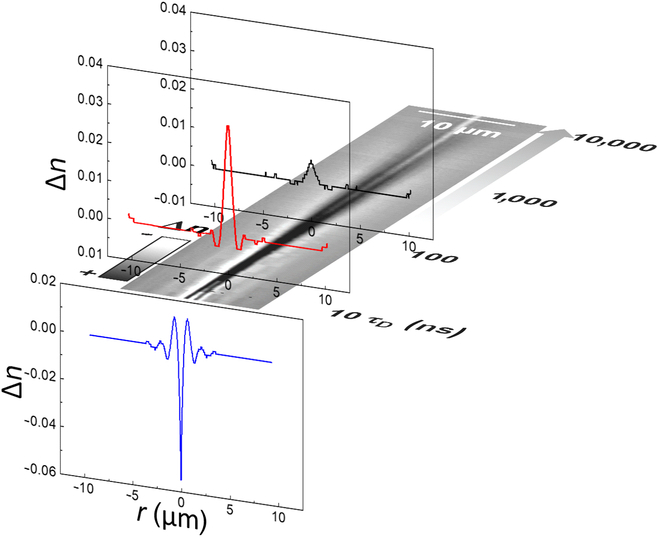Quantitative Mapping of Transient Thermodynamic States in Ultrafast Laser Nanostructuring of Quartz
H. D. Nguyen, A. Tsaturyan, S. Sao Joao, R. Dwivedi, A. Melkonyan, C. D’Amico, E. Kachan, J. P. Colombier, G. Kermouche, R. Stoian
Ultrafast Sci. 4 2024 0056
![]()

Understanding material structural reaction to light is of utmost importance to advance processing resolution in ultrafast laser volume structuring into the nanoscale. Selective thermodynamic pathways are required to quench energy transport in the most rapid manner and to confine the process to nanometer lengths, bypassing optical resolution. Quantifying material dynamics under confinement, with in situ access to transient local temperature and density parameters, thus becomes key in understanding the process. We report in situ reconstruction of thermodynamic states over the entire matter relaxation path in bulk α-quartz irradiated by ultrafast nondiffractive laser beams using time-resolved qualitative and quantitative optical phase microscopy. Thermooptic dynamics indicate rapid spatially confined crystalline-to-amorphous transition to a hot dense fused silica form. Densification exceeds 20% and the matrix temperature rises to more than 2,000 K in the first nanosecond. This structural state relaxes in hundreds of nanoseconds. The dispersion and time design of the optical beam to picosecond durations increases the spatial confinement and triggers an extreme nanostructuring process based on nanocavitation that occurs within the amorphizing material, where the low-viscosity phase lowers the mechanical requirements for the process. Processing feature scales of less than a tenth of the optical wavelength are obtained in the volume. This allows for structural and morphological nanoscale material features under 3D confinement that can engineer optical materials.
